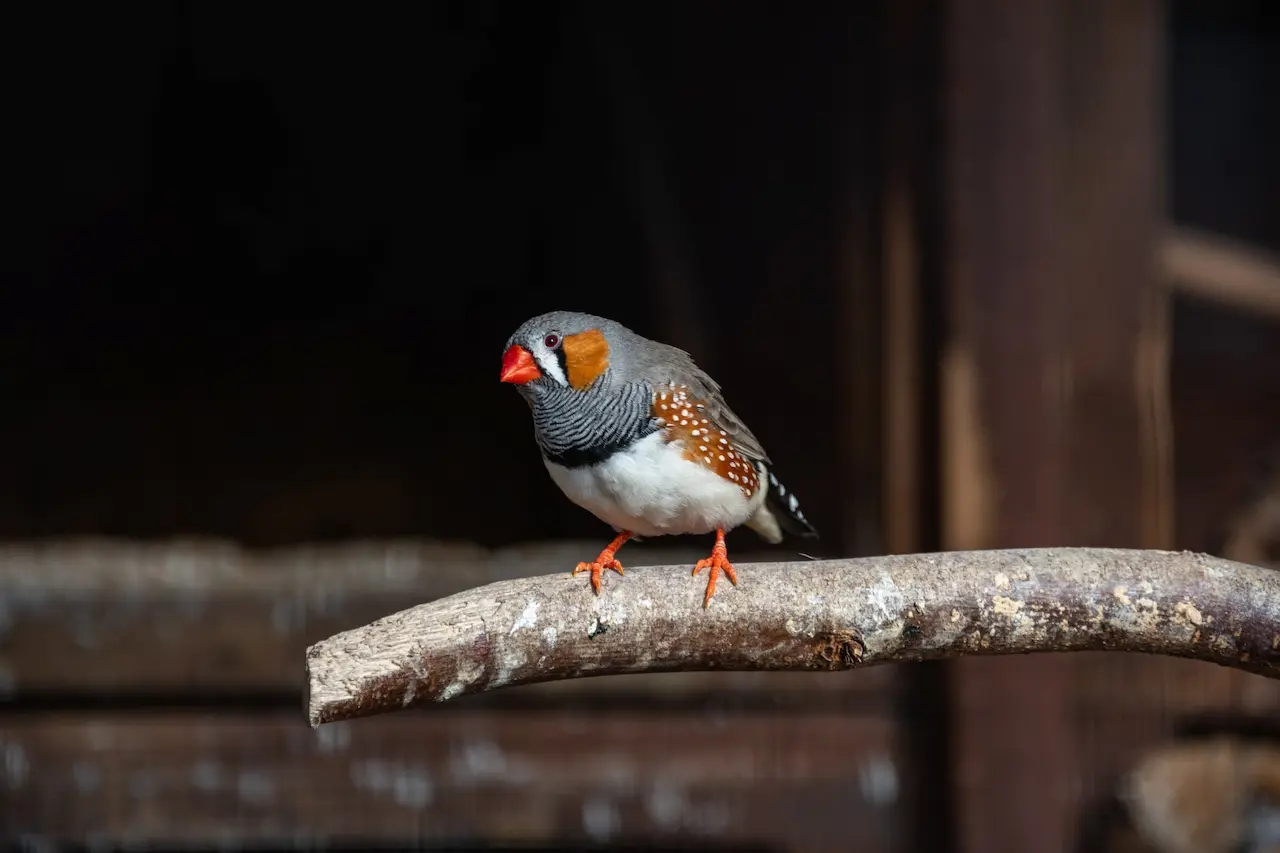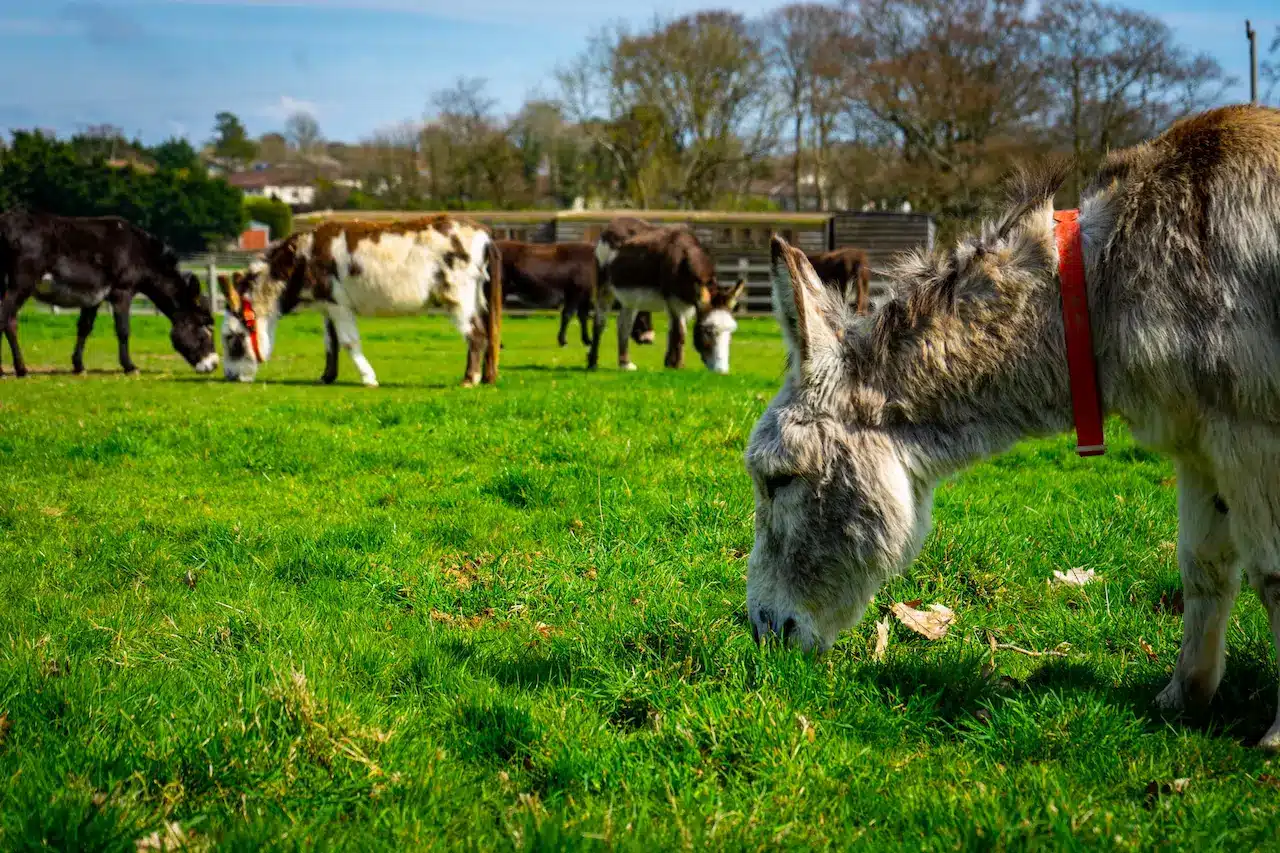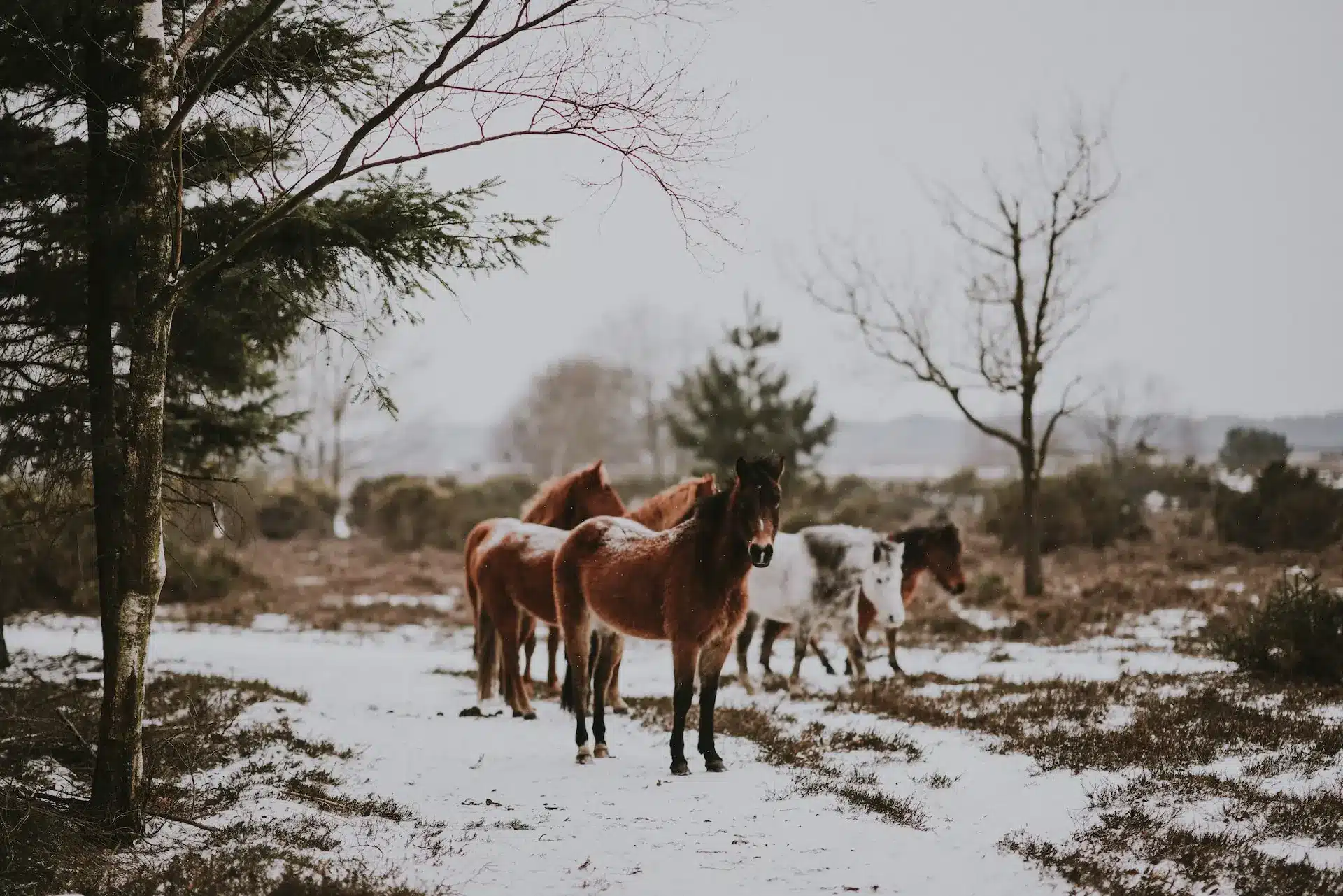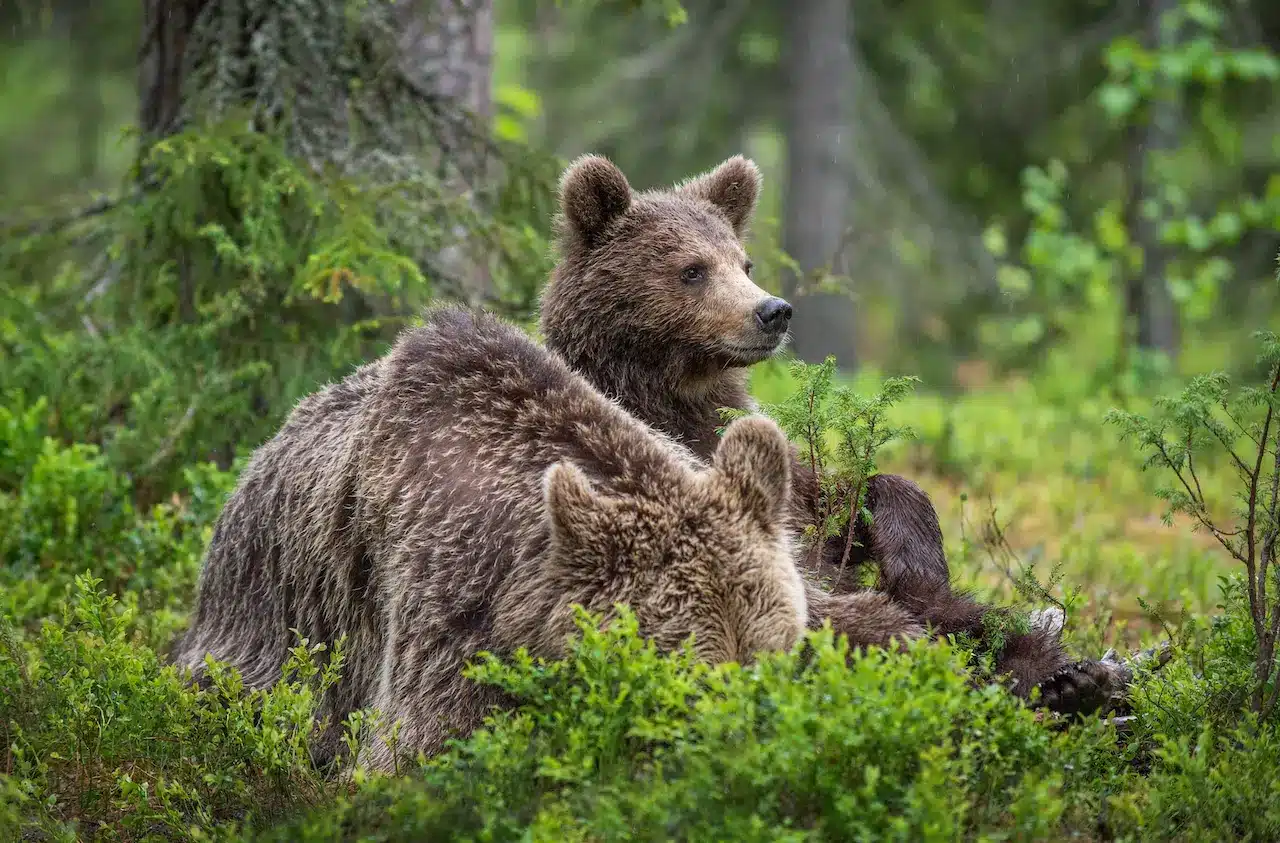
The New Forest National Park is home to a wide variety of endangered species, making it a “world capital” for wildlife. The unique landscape of this area is shaped by the grazing of horses, cattle, and pigs that are allowed to roam freely. Therefore, the New Forest is a haven for wildlife lovers with a wide diversity of species to spot, and its creatures are undoubtedly one of the National Park’s most fantastic attractions.
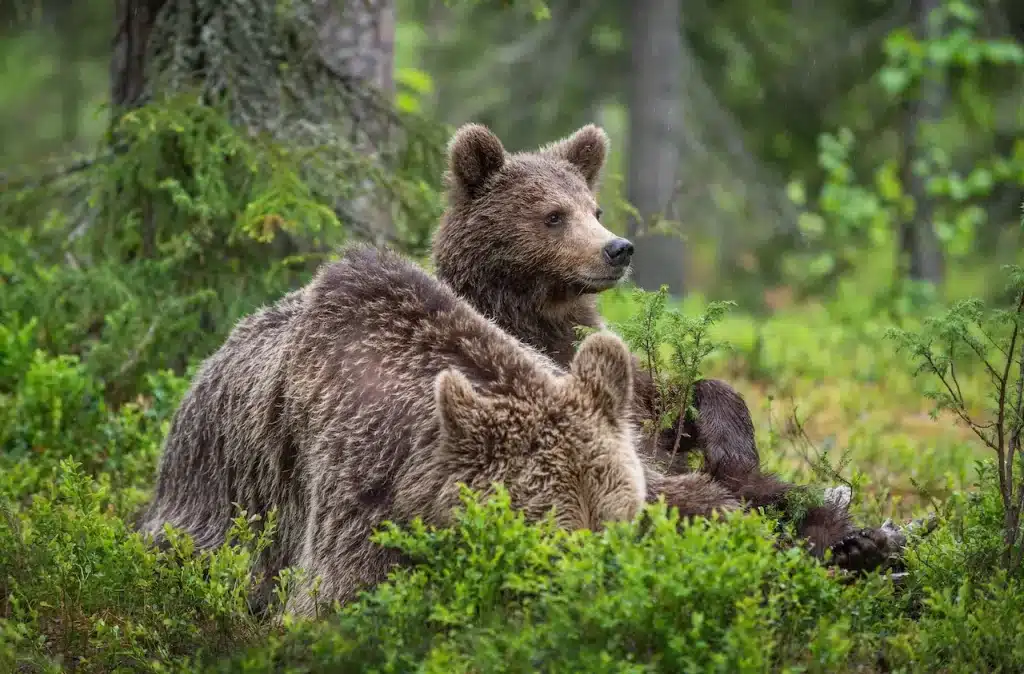
One of the reasons the New Forest was designated a national park in 2005 was its abundance of wildlife. Its diverse ecosystems provide a home to a wide variety of wildlife inside its borders. Due to the park’s abundance of species, much of it has been designated as a Special Area of Conservation.
New Forest wildlife is by no means unique, but it’s long been recognised that the area is of very special interest due to the rare mix of habitats that support the area’s animal and plant life.
The three primary habitats found within the New Forest are open heathland, woodland and bogs (wetland) – all a result of centuries of human activities in the area.
It’s fortunate, then, that the New Forest’s designation as a royal hunting ground by King William I in 1079 gave this special area and its wildlife the protection that it did.
There are many natural wonders to witness here, whether you want to spot various birds or watch moms tend to their young. The New National Forest is home to many magnificent animal species, some of which are listed below.
New Forest Ponies
They are, however, descendants of the wild ponies that roamed areas of Britain centuries and centuries ago but have long been domesticated and interbred with other pony and horse breeds to improve their genetic makeup.
The idea that all New Forest ponies are direct descendants of Spanish horses that survived shipwrecks, during the time of The Armada, and swam ashore along the southern English coastline is an idea that has long been accepted as a myth.
The New Forest ponies of today are all owned by someone, these owners are known as ‘Commoners‘ and they have the right to graze their ponies on the Open Forest land. This right has been passed down since the times of King William I and the creation of the New Forest as a royal hunting ground.
The ponies are cared for not only by their owners but also by the Agisters, the employees of the New Forest Verderers.
During late summer each year, all New Forest ponies are rounded up in drifts and accounted for. Auctions are held at the Beaulieu Road pony sales which give the commoners the option of buying / selling ponies if they so wish, not to mention having a good get-together.
DEER
The New Forest has always been renowned for deer. The New Forest is home to five types of deer in the UK’s wild. These five types of deer are fallow, fed, sika, roe, and muntjac, and they can be found on Crown properties in the New Forest. Each species has slightly different breeding periods.
The New Forest is a great habitat for deer because they have a large area of undisturbed land. If you can’t see the deer themselves, keep an eye out for their footprints and droppings, which look like large raisins.
The deer of the New Forest are the very reason why the area was designated as a royal hunting ground back in 1079 by King William I.
There are five different species in the New Forest, only two of which are native to Britain. These are the red deer and much smaller roe deer. The three other species are the fallow deer, sika deer and the muntjac deer. These latter two species are found in just a few selective areas of the Forest and extremely elusive; their small physical size and the fact that there aren’t many of them make spotting these animals very difficult indeed.
The red deer of the New Forest, though the biggest of all British deer species, are also elusive and comparatively few in number (numbers are kept to about 100, with an annual cull carried out by the Forestry Commission).
The open heathland around the Burley area and Ober Heath, near Brockenhurst, are good places to see these majestic animals that are more associated with the highlands of Scotland than southern England. The deer are most active at dawn and dusk. A very distinctive characteristic of the red deer is its bark – the loud and throaty bellow is a privilege to hear!
Fallow deer, pictured right, are the most common of the New Forest deer species and have distinctive markings during certain times of the year – the classic ‘Bambi‘ spots can be seen on the flanks of the deer during the summer months, along with distinctive black stripes around the tail area. The bucks (males) can grow impressive antlers, the span of which can be up to 4 or 5 times the width of the animal’s head.
These deer are widespread throughout the New Forest and, although shy, are numerous enough to be easily seen during a quiet forest walk.
Roe deer are also numerous but their smaller size makes them harder to see, especially amongst the thicker undergrowth. Roe deer have distinctive black noses and for much of the year they have a uniform gingery-brown coat.
A roe buck’s antlers are small with few branches, unlike the fallow’s.
The Forestry Commission cull around 800 deer annually; this is a necessary action to protect the vegetation of the New Forest, as there are no natural predators to control deer numbers.
A place to see fallow deer is the Bolderwood Deer Sanctuary.
HEARTLAND BIRDS
The New Forest is particularly significant for heathland birds since it has some of the largest areas of health in all of Europe. Rare and endangered species, including the nightjar, woodlark, Dartford warbler, and curlew, come to breed there. Heathland is good for these birds because of its open terrain, widely spread bushes, warm, dry environment, and abundance of insects.
They lay their eggs from March through to the end of the summer. Kindly help with their protection by keeping to the main trails and ensuring that dogs do the same; if necessary, use lead to prevent them from disrupting nests in the Forest.
REPTILES
All six native reptiles in the UK can be found in The Forest: sand lizards, adders, slow worms, grass snakes, smooth snakes, and common lizards.
As cold-blooded, dry-skinned animals, reptiles prefer to bask in warm, dry places with excellent surrounding cover so they may flee if a predator comes. The best habitats for them are open places with sandy soils that heat up quickly, which makes the New Forest with its heathlands an ideal location.
If you wish to spot a snake or lizard in its natural habitat, look on south-facing slopes, on logs, at the border of the scrub, and in areas with mature heather.
Because of its southerly location and relatively warmer climate, the New Forest is home to all of Britain’s species of snakes and lizards.
The most notorious of these is the adder, Britain’s only venomous snake. The distinctive ‘zig-zag’ pattern running the entire length of the snake’s body makes it very easily identifiable, and during the warmer summer months adders are likely to be seen basking in the sunshine on the edge of pathways and tracks.
Like most snakes, adders are easily scared and will disappear into the undergrowth at the slightest sign of an approaching human or dog.
Adder bites to humans are rare, maybe 5 or so a year in the New Forest. The venom is strong but the very small amount injected into the victim limits the severity of the bite, unless it triggers an allergic reaction in the victim.
Click here if you love interesting animals and pets and ever wondered what is the cost of an axolotl.
However, any bite or suspected bite from an adder should be dealt with as soon as possible – local clinics and hospitals hold the appropriate anti-venom.
Dogs that suffer an adder bite should be taken to a local vetenary clinic as soon as possible, although unless the snake was seen by the owner it’s very difficult to know whether the dog was bitten or has suffered another kind of injury.
Other snakes found in the New Forest are grass snakes and smooth snakes, the latter being the rarest of Britain’s snakes.
Both species of British lizard, the common lizard and the sand lizard, can also be seen in the Forest although you have to have sharp eyes!
The unmistakable sand lizard is Britain’s rarest reptile and only survives in certain areas of the New Forest now thanks to a successful breeding and release program. The sandy open heath lands are this animal’s preferred habitat, with the course heather providing excellent protection from natural predators.
As well as snakes and lizards, the New Forest is also home to toads, frogs and three different species of newt which can be seen in many of the Forest’s smaller temporary ponds during the spring months.
A fine place to try and see all of the New Forest reptiles is the New Forest Reptile Centre, near Lyndhurst.
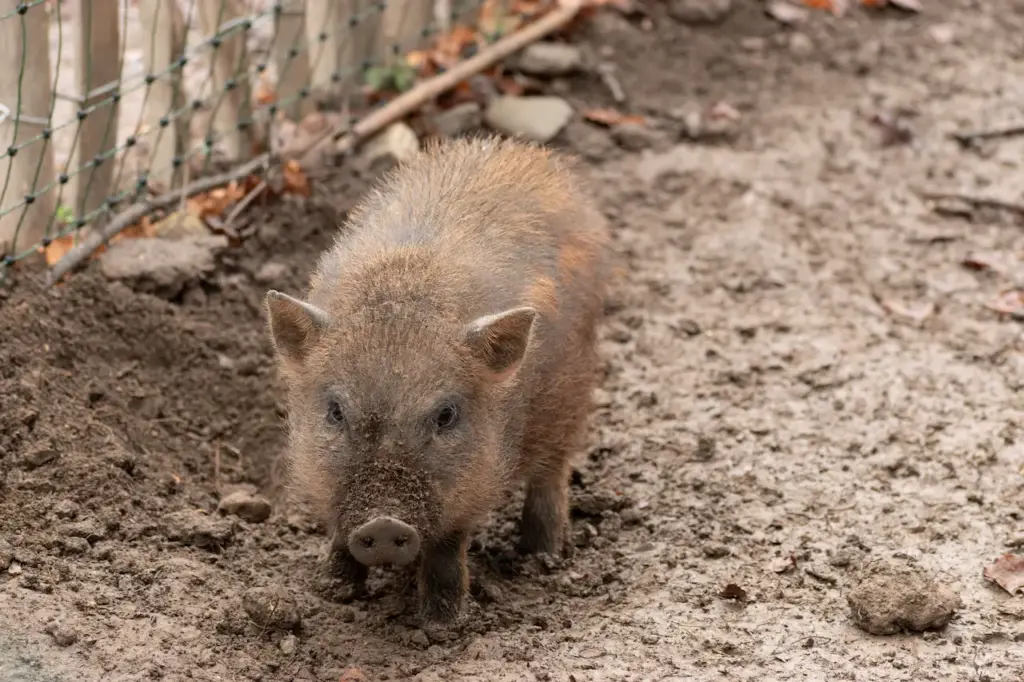
PIGS
Every autumn, the Commoners engage in a tradition known as Pannage that dates back to the period of William the Conqueror, who founded the New Forest. Pannage involves the pigs eating the fallen acorns and chestnuts before the ponies can because acorns and chestnuts harm ponies. Even pigs can be seen wandering the New Forest.
Commoner-owned New Forest wildlife doesn’t just stop at the ponies; pigs and cattle of various breeds can also be seen roaming freely. The same situation applies, in that the animal owners are merely exercising their Commoner right to graze the animals on the Open Forest.
Pigs can be seen in larger numbers during the later autumn months when they are used to forage for acorns that have fallen from the oak trees, an activity referred to as ‘pannage‘.
Ponies that eat large quantities of fallen acorns can suffer serious digestive problems, and this risk is cut down significantly when the pigs clear the ground of thousands of acorns.
Beware! Foraging pigs can be very aggressive towards humans, and pigs chasing and even biting people aren’t unknown occurrences. For this reason, it’s best to view the pigs from a safe distance, as they can decide to charge at any time and without warning!
BATS
Bats are fascinating creatures that yet hold a lot of unsolved secrets. Bats make up about one-third of the native land animals in Britain. Most of the 16 different species of British bats may be found in the New Forest.
Of the 18 species of bats present in the UK, at least 14 can be found in the New Forest. Barbastelle, Bechstein’s, and larger horseshoes are among the rare species.
Although bats in the forest are widely spread, they do congregate to breed and often hibernate in communal roosts. Seasonal roosts shift, and at the end of the summer, the bats typically migrate to a different winter roost.
DONKEYS
Due to their hardiness and a high tolerance for the harsh winter weather, donkeys can be spotted throughout the year in the New Forest. Towns like Brockenhurst, Burley, and Beaulieu are where you’ll find them more frequently than on open heathland.
They are well-liked by tourists and prefer to graze on hedgerows.
BEETLES
The New Forest National Park is home to an astounding 2,600 species of beetles. These are saproxylic species, which only occasionally exist in old woodlands and depend on the microbial breakdown of dead woody tissues. Some beetles specialize in living in heathlands, while the majority reside in woods.
RABBITS
In the New Forest, rabbits are a common sight. They can be seen grazing on the wider open grasslands and the grassy road embankments. Although a myxomatosis outbreak in the 1950s reduced their numbers, the population has recovered and is still in good health.
BUTTERFLIES
The New Forest’s most noticeable insects are butterflies because of their vibrant colors. The variety of habitats is crucial for the New Forest’s butterflies. Some rare woodland and heathland species depend on habitat management being just right for them.
Caterpillars are born from the eggs that butterflies lay. The caterpillars’ diets vary depending on species; many consume grasses, some eat diverse plant leaves, and some blue species eat ant pupae and eggs in ant nests.
BADGERS
If you are quiet and careful enough, Badgers can be spotted in the woodlands, as they are very shy creatures and easily startled. The best time to spot them is at either dawn or dusk when they will emerge from their homes to search for food.
Badgers are very shy animals and easily startled. They can be seen in the wooded areas if you are quiet and careful enough. Dawn or dusk are the best times to see them because that is when they leave their homes to look for food.
DRAGONFLIES AND DAMSELFLIES
75 percent of all dragonfly and damselfly species, including the highly rare southern damselfly, are only found in the New Forest and three other locations in the UK. The New Forest is an important habitat for dragonflies because it has many ponds, clear streams, and more wet bogs than any other site in northwest Europe.
There are several predators of dragonflies. The most important are fish, which consume eggs and larvae, and birds, which consume adults. Dragonflies and damselflies lay their eggs in water, where the larvae spend several years developing and becoming vicious predators.
CATTLE
Cattle can freely roam and graze in the forest, much like the other creatures stated earlier. In the summer, up to 3000 cattle can be spotted in the New Forest; however, this number drops in the fall and winter. From the Friesian cow to the winter-ready Highland cattle, more than a dozen diverse varieties call this place home.
MOTHS
Of the 2,500 species found in Britain, the New Forest is home to 1,460 months. Moths contribute significantly to the biodiversity of the New Forest and serve as a food supply for various predators, such as bats, birds, and spiders.
Eggs laid by moths develop into primarily plant-feeding caterpillars, which then pupate before the adult emerges from the pupa and the larva forms.
Although some moths fly in the daytime, many people notice large moths at night, even if they do not know what they are.
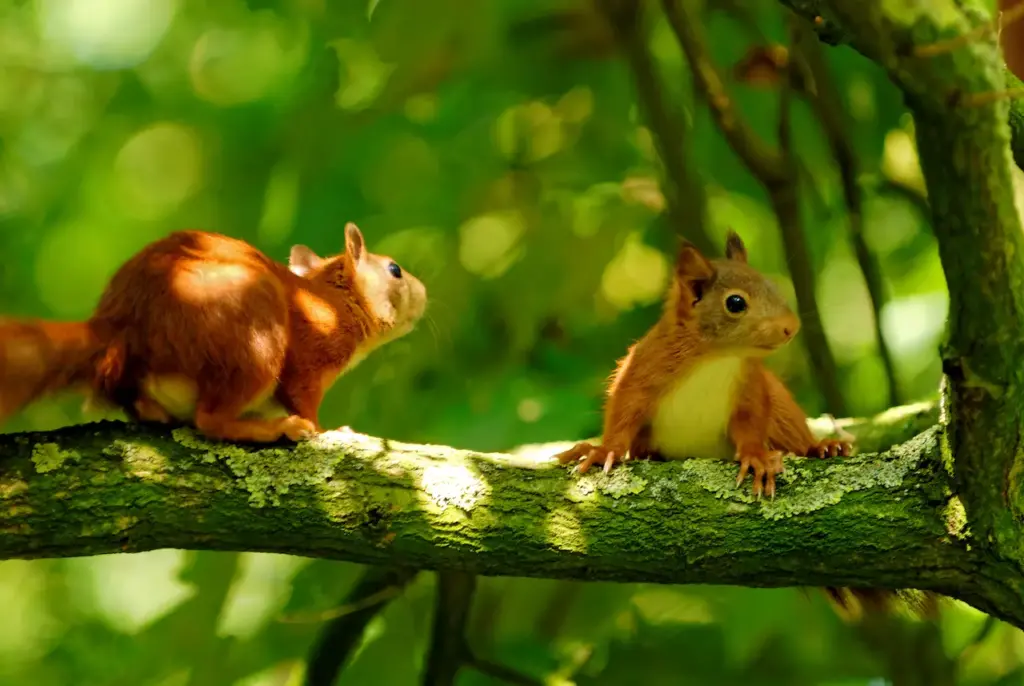
SQUIRRELS
Another common animal in the New Forest is the squirrel, often seen darting through the woods and forests. Unfortunately, the most common sighting continues to be gray squirrels. In addition to carrying diseases that have contributed to the extinction of the red squirrel, they also steal eggs from bird nests, causing a hazard to other nearby fauna.
GOSHAWKS
One of the most elusive birds, goshawks have greatly succeeded in conservation in the New Forest.
These large hawks often return to the same nest for several years. They nest in the canopy of some of the tallest trees in the Forest. Their wings are designed specifically for softly and expertly soaring through the forest. The white feathers on their fronts with the horizontal gray stripes and the darker gray feathers on their wings and backs help to identify them.
Other Important New Forest Animals
Badgers, foxes, grey squirrels and rabbits can all be seen throughout the New Forest National Park.
The best time for badger watching is at dawn or dusk when they come out of their homes, or ‘setts’, to forage for food. The badger is a shy animal and easily startled, so a badger watching session needs to be done quietly and from the cover of trees or bushes.
Foxes are much more common throughout the Forest and indeed can be found in many urban areas throughout the National Park, where they scrounge on domestic rubbish.
Grey squirrels and rabbits are very widespread throughout the area, both inside and outside of the New Forest National Park boundary.
Grey squirrels actually do more harm than good and, like the deer, their numbers are kept under control by the Forestry Commission. The squirrels can not only damage the quality of trees that are grown for commercial use but also pose a threat to natural birdlife in the area by stealing eggs from nests for food.
Rabbits can be seen at any time of day or night, commonly grazing on the open areas of grass and are often seen on the grassy embankments of New Forest roads. Since the myxomatosis outbreak of the 1950s throughout the UK, the rabbit population has recovered well in the Forest and continues to rise.
Although large in numbers, rabbits aren’t seen as a big threat to the vegetation of the area simply because their main diet is grass.

